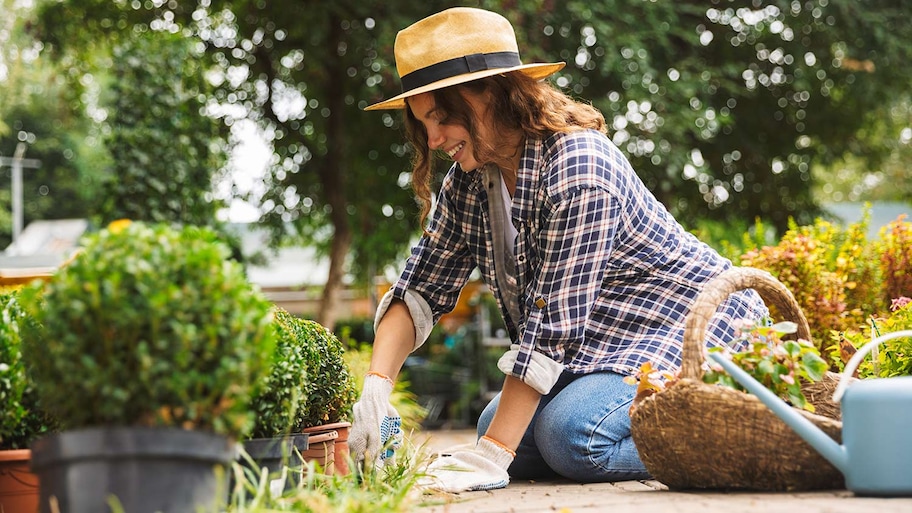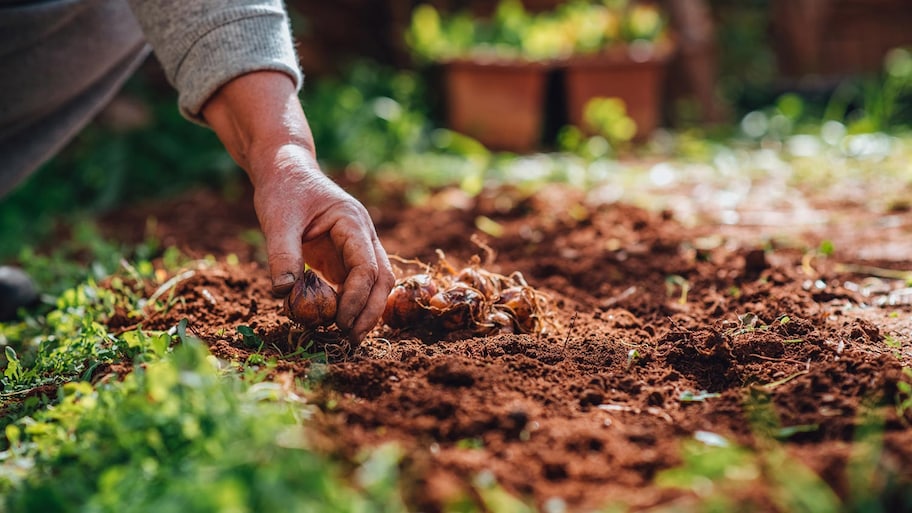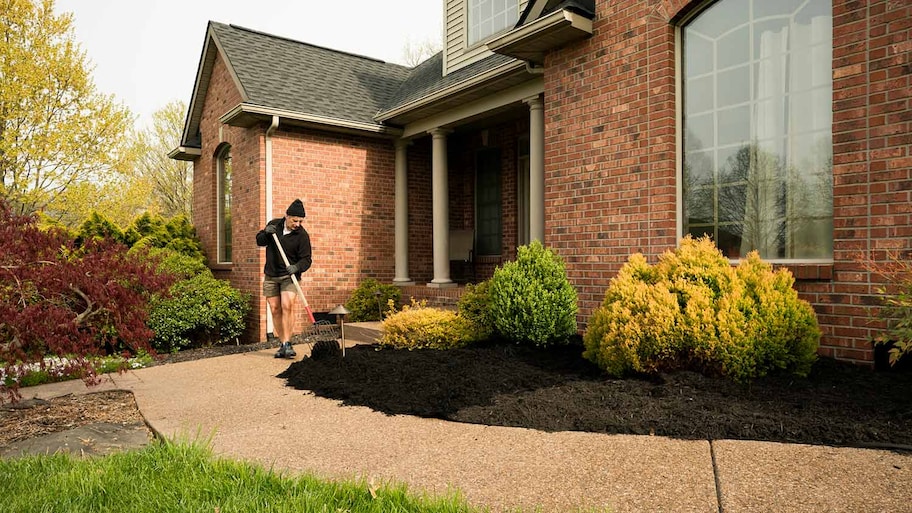13 Fall Gardening Tips for a Beautiful Spring Bloom
Use this fall garden task list to ensure your garden stays in top shape for the spring


The temperatures are dropping, and there’s the smell of pumpkin spice in the air—it must be fall. While you’re out there raking leaves, here are a few more gardening tips you can use to make sure your yard will be even more beautiful next spring.
1. Amend the Soil
Give your soil a quick test to see if you need to adjust the PH. Most plants prefer neutral soil—a PH of around seven—but some plants like azaleas, rhododendrons, and blueberries, like more acidic soil with a PH value of 5.5 or under. Numbers over seven indicate alkaline soil.
Don’t fertilize too heavily in the fall, as you don’t want to encourage a ton of plant growth when the weather cools. However, it is the perfect time to add an organic compost mix that will break down slowly over the winter months and give you rich dirt to plant with next spring.
2. Work on Weed Removal
Weed removal at this stage is critical: Anything you leave to winter over will come back like gangbusters in the spring. Remove any weeds, including the roots. You may choose to apply a pre-emergent—an herbicide to prevent weeds—to the soil before mulching to stop weeds from growing. Do not apply the pre-emergent to any areas where you wish to plant early flowering seeds, though, as this will stop their growth too.
3. Sew Flower Seeds for Early Spring
For beautiful blooms in early spring, you can plant cold-hardy, early flowering seeds for plants such as larkspur, pansies, alyssum, and cornflowers, in early to mid-fall (September to mid-October in most climates). Try to get your seeds in the ground before consistent heavy frost, and be sure to plant them in a couple of inches of rich composted soil.
4. Plant Spring Bulbs

Tulips, daffodils, hyacinths, and other spring bloomers also like to make it into the garden bed in the fall before the first frost, so plan on doing some planting.
5. Divide Perennials
The fall is the right time to rearrange your garden. Dig up and divide your perennials, and replant in any gaps in your garden beds. In many climates, you can dig and divide perennials through October.
6. Dig Up Delicate Plants and Tubers
If you live in an area of heavy frost or snow, dig up any tender tubers that can’t take the winter temperatures, such as dahlias, taro, and canna lilies. Allow them to dry out for at least a few days before storing them in a wooden crate or terracotta pot in shavings or sawdust. Plants like begonias and calla lilies can often be kept indoors as houseplants through the winter.
7. Plant Trees and Shrubs
Autumn is the perfect time to plant shrubs and trees. They will have just enough time to get their roots established before losing their leaves or going dormant for the winter. Always water well for at least one week following planting, and mulch to protect from frost.
8. Reseed Your Lawn
Planting grass seeds in September or October will help to fill in any gaps in your lawn and will help it establish before winter, giving you a lusher lawn in the spring.
9. Plant Cool-Weather Vegetables
Clean up your vegetable bed by harvesting and weeding. In early fall—September in most climates—you can plant cool-season vegetables to get a bumper crop of abundance from your vegetable garden. Think hardy veggies with quick germination time. Ideal plants include root vegetables like radishes, beets, parsnips, and carrots, as well as greens such as kale, chard, and cabbage.
10. Mulch Your Flower Beds

There’s no time like the fall to do a proper mulch. If you live somewhere with plenty of leaves to rake up, you’re in luck: You’ve got the perfect mulch for free. You can either apply the leaves directly to the garden beds or chop them up in a wood chipper to give you a fine mulch that will provide nutrients to give you strong growth in the spring. Use extra leaves or straw to mulch plants that need more frost protection, like roses.
11. Trim Shrubs and Perennials
Clean up hedges and trim back shrubs and perennials. You can cut back grasses a little later in the fall (November) so you can enjoy their fall colors. Try to cut these back before the first frost.
12. Prune Trees
The fall is a great time to trim up evergreen trees, but it is also ideal for pruning any trees that have gone dormant. Once a tree has lost its leaves, it’s easier to see the shape, making it ideal for giving the tree some form.
13. Clean Up One More Time

Before it gets too cold, give your yard another once-over. Remove any dead leaves, branches, and garden debris from trimming. If you live somewhere where it routinely dips below freezing, take out garden ornaments that might crack in lower temperatures.
When you’ve completed this fall garden checklist, all that’s left to do is add a few pumpkins to your stoop and enjoy the change of seasons. But if you’d rather spend your weekend at the pumpkin patch, you can always hire a pro yard clean-up crew near you to help prep your garden for the fall.
